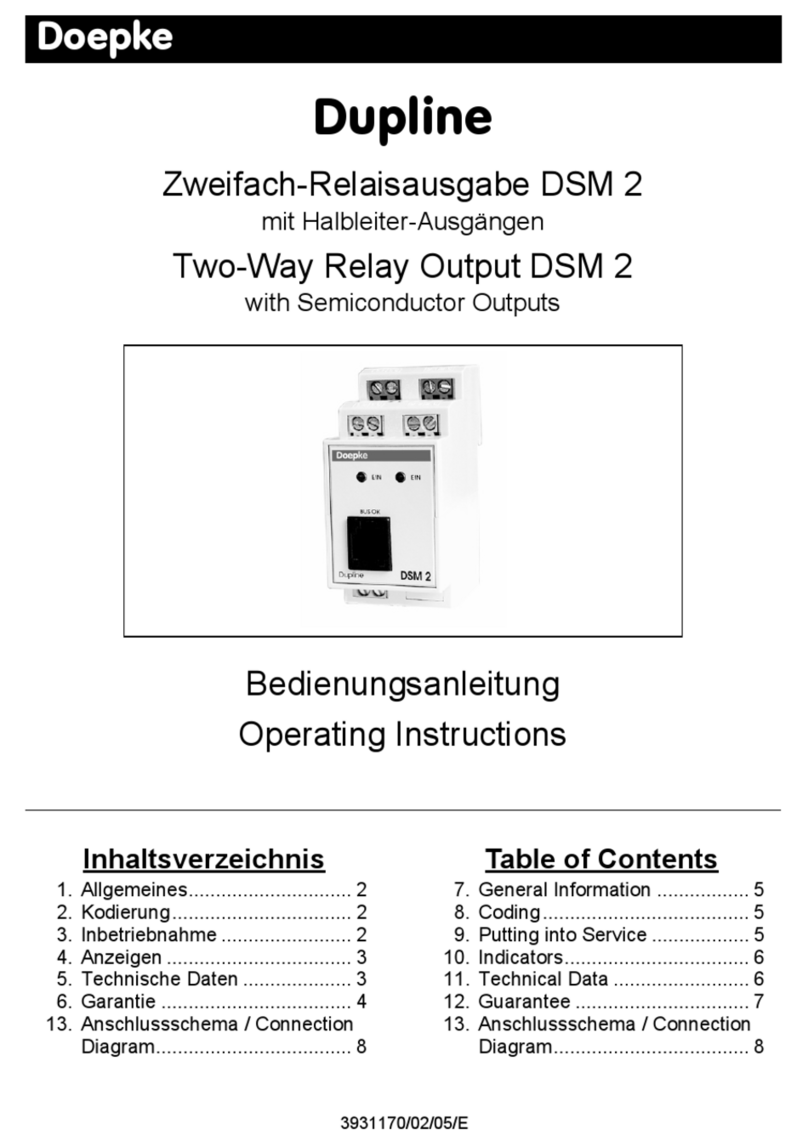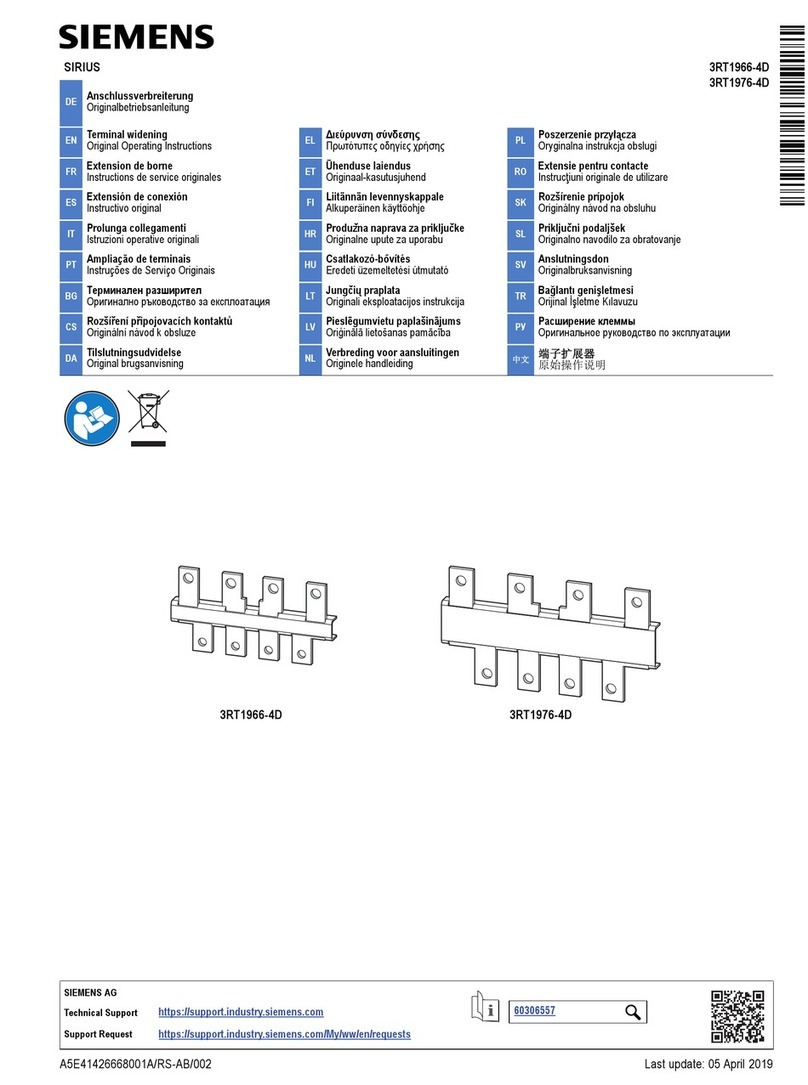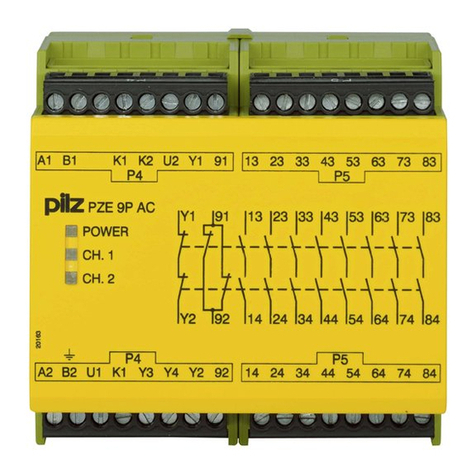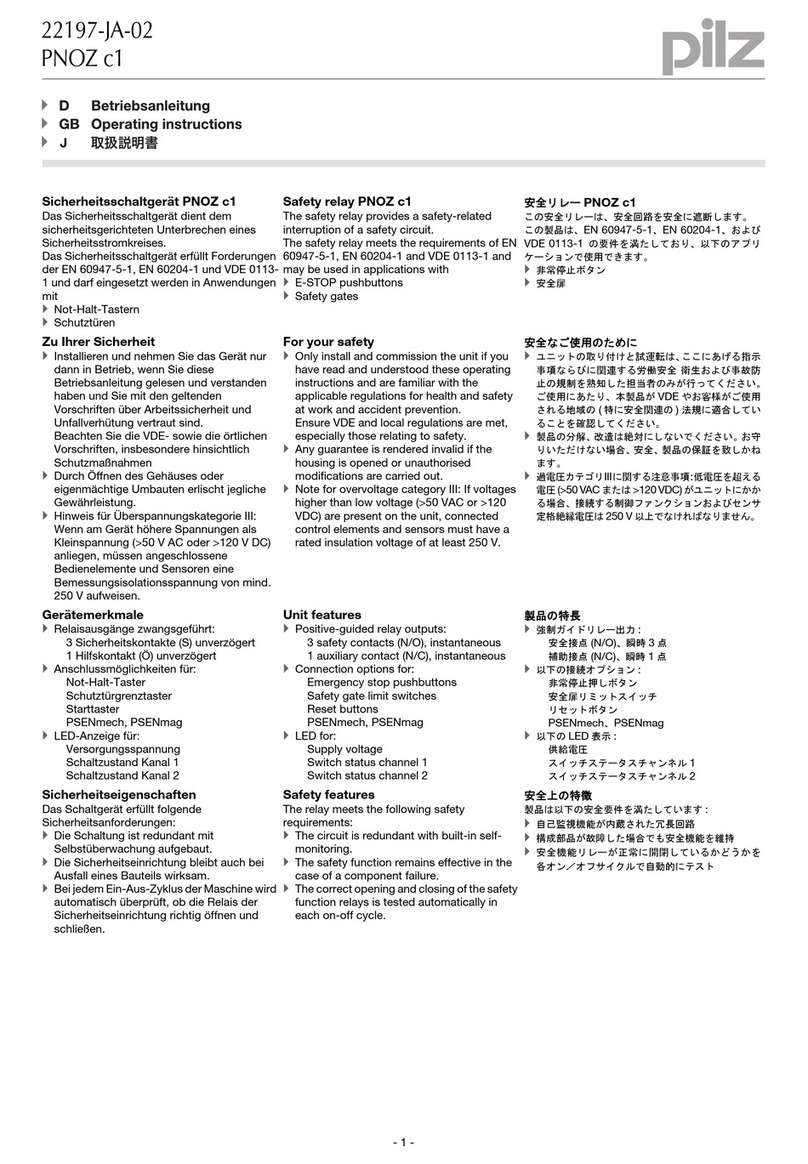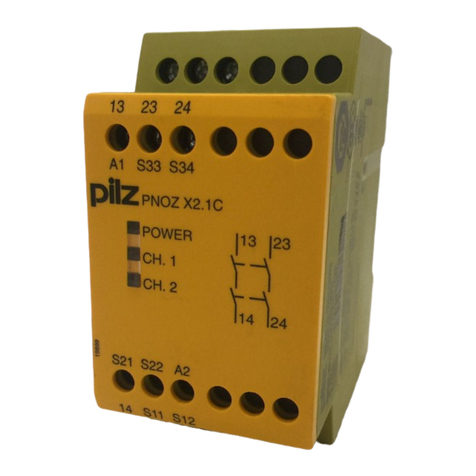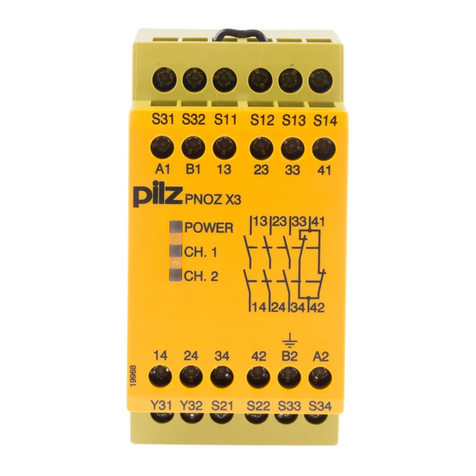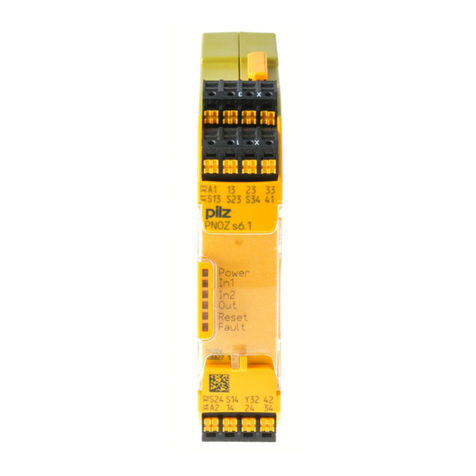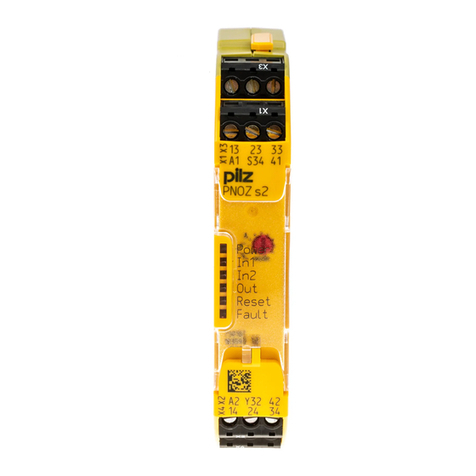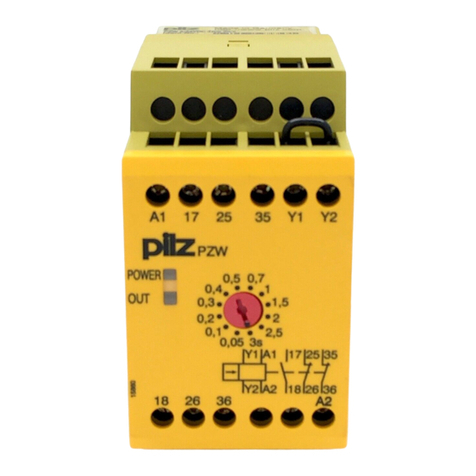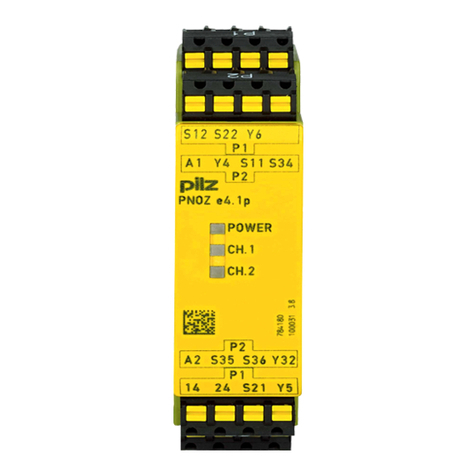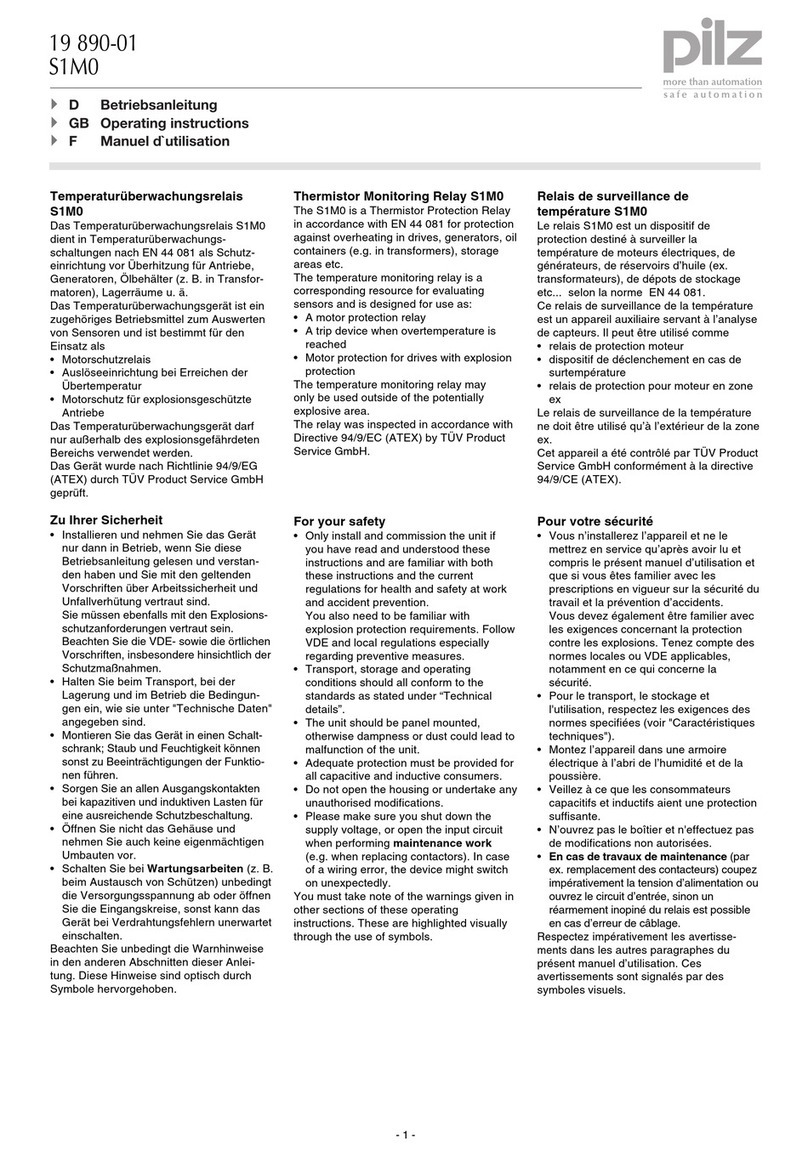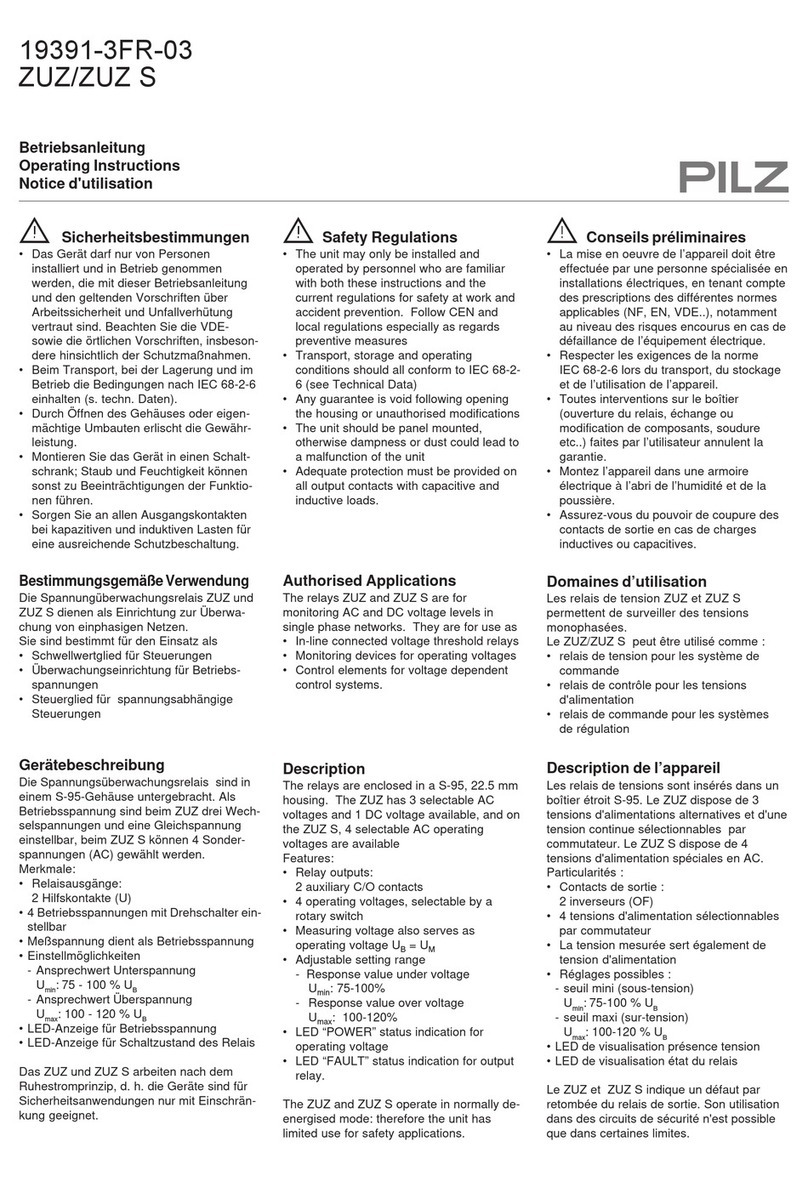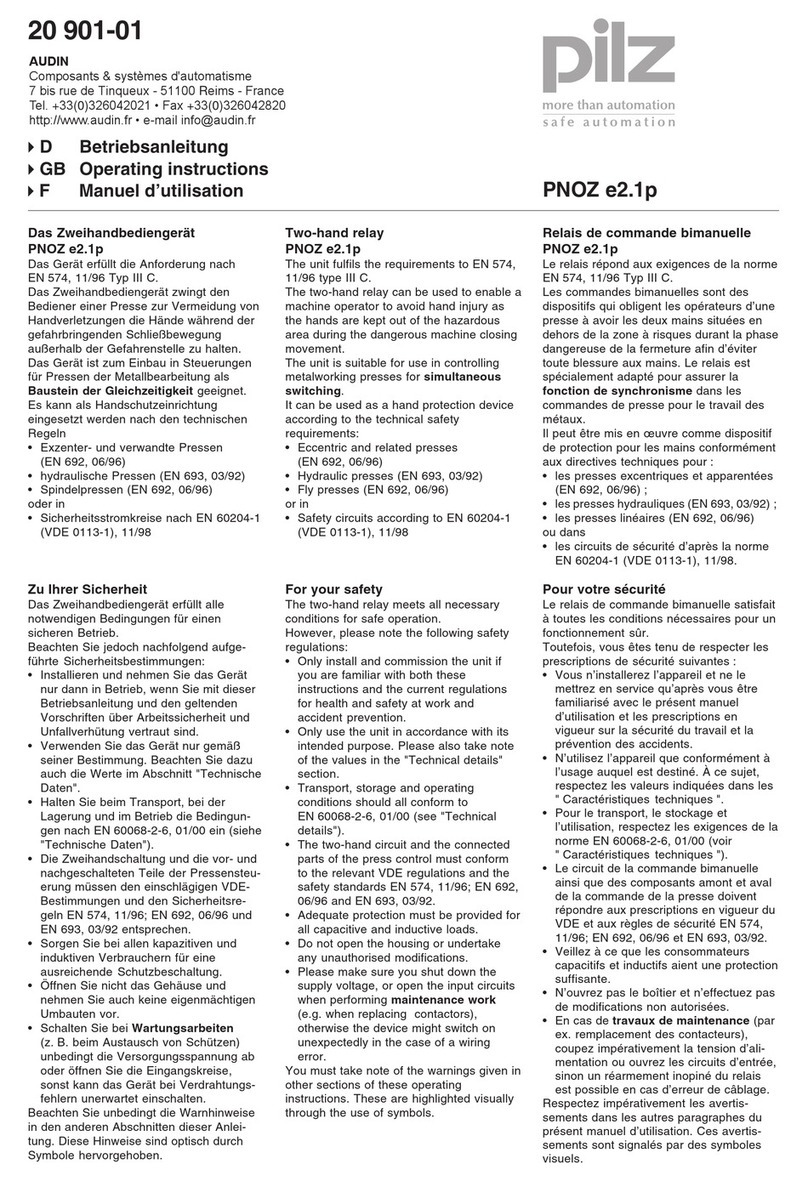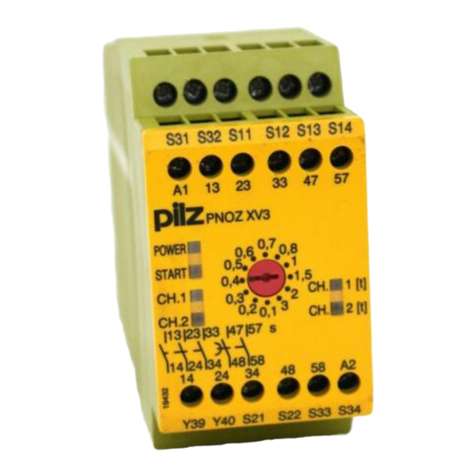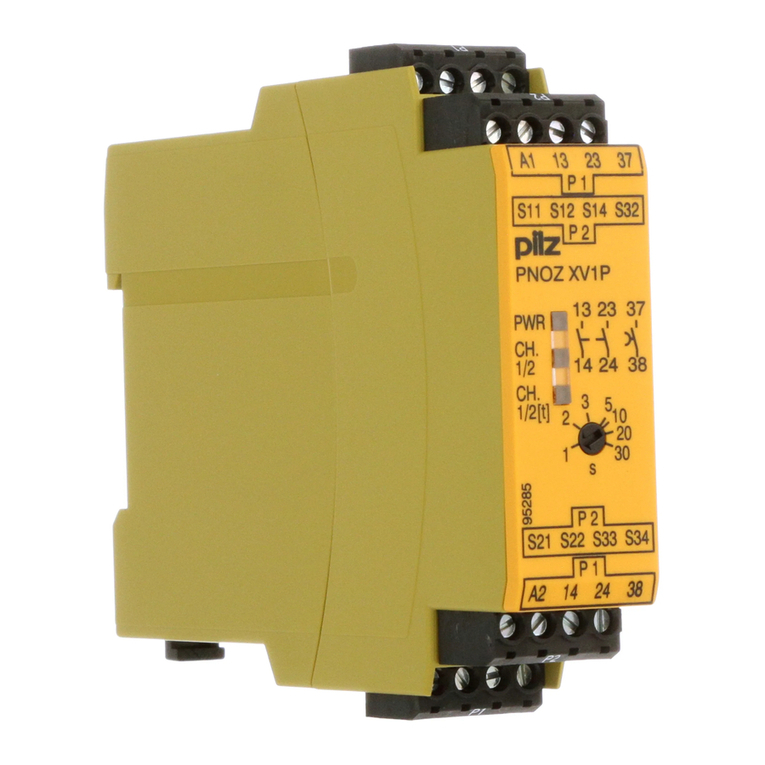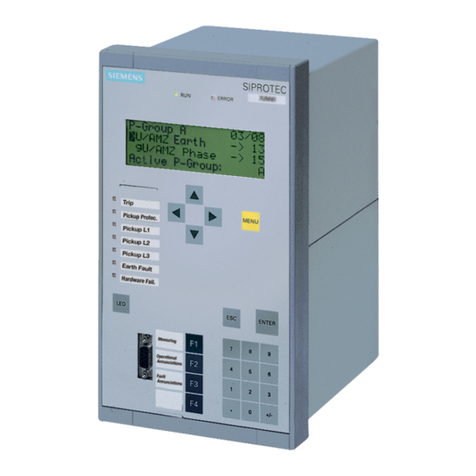
- 3 -
Inbetriebnahme
Beachten Sie bei der Inbetriebnahme:
• Der Einsatz des Halbleiterausgangs ist für
sichereAnwendungenunzulässig.
•Vor die Ausgangskontakte eine Siche-
rung (s. techn. Daten) schalten, um das
Verschweißen der Kontakte zu verhin-
dern.
• Berechnung der max. Leitungslänge Imax im
Eingangskreis:
R
lmax
R
l
/ km
I
max
=
Rlmax = max. Gesamtleitungs-
widerstand (s. technische Daten)
Rl/km = Leitungswiderstand/km
• DadieFunktionQuerschlußerkennung
nicht einfehlersicher ist, wird sie von Pilz
während der Endkontrolle geprüft. Eine
Überprüfung nach der Installation des
Geräts ist wie folgt möglich:
1. Gerät betriebsbereit (Ausgangskontakte
geschlossen)
2. Die Testklemmen S12-S22 zur Quer-
schlußprüfungkurzschließen.
3. Die Sicherung im Gerät muß auslösen
und die Ausgangskontakte öffnen.
LeitungslängeninderGrößenordnungder
Maximallänge können das Auslösen der
Sicherung um bis zu 2 Minuten verzögern.
4. Sicherung wieder zurücksetzen: den
Kurzschluß entfernen und die Versor-
gungsspannung für ca. 1 Minute abschal-
ten.
• Leitungsmaterial aus Kupferdraht mit einer
Temperaturbeständigkeitvon60/75°C
verwenden.
• Angaben im Kapitel „Technische Daten“
unbedingt einhalten.
Ablauf:
• Versorgungsspannung:
Versorgungsspannung an Klemmen A1
und A2 anlegen.
• Startkreis:
- Automatischer Start: S33-S34 brücken.
- Manueller Start: Taster an S33-S34
anschließen.
• Eingangskreis:
- Einkanalig:
Öffnerkontakt von Auslöseelement an
S11 und S12 anschließen, S21-S22 und
S31-S32 brücken.
- Zweikanalig: Öffnerkontakt von
Auslöseelement an S21-S22 und S31-
S32 anschließen und S11-S12 brücken.
•
Rückführkreis:
Externe Schütze in Reihe zu Startkreis
S33-S34 anschließen.
Die Sicherheitskontakte sind aktiviert (ge-
schlossen), der Halbleiterkontakt leitet. Die
Statusanzeigen für "CH.1", "CH.2" und "ON"
leuchten. Das Gerät ist betriebsbereit.
Wird der Eingangskreis geöffnet, sperrt der
Halbleiterausgang sofort und die Sicherheits-
kontakte 27-28/37-38 öffnen nach Ablauf der
Rückfallverzögerung. Die Statusanzeige
erlischt.
Wieder aktivieren
• Eingangskreis schließen.
• Bei manuellem Start zusätzlich Taster
zwischen S33 und S34 betätigen.
Die Statusanzeigen leuchten wieder, der
Eingangskreis ist aktiviert.
Mise en oeuvre
Remarquespréliminaires:
• L’utilisation de la sortie statique est
interdite pour des fonctions de sécurité.
•Protection de contacts de sortie par des
fusibles (voir les caractéristiques
techniques) normaux pour éviter leur
soudage
• Calcular les longueurs de câblage max Imax
dans le circuit d’entrée:
R
lmax
R
l
/ km
I
max
=
Rlmax = résistivité de câblage totale max.
(voir les caractéristiques techniques)
Rl/km = résistivité de câblage/km
• La fonction de détection de court-circuit est
testé par Pilz lors du contrôle final. Un test
sur site est possible de la façon suivante :
1. Appareil en fonction (contacts de sortie
fermés)
2. Court-circuiter les bornes de
raccordement nécessaires au test S12-S22
3. Le fusible interne du relais doit
déclencher et les contacts de sortie doivent
s‘ouvrir. Le temps de réponse du fuisible
peut aller jusqu‘à 2 min. si les longueurs de
câblage sont proches des valeurs maxima-
les.
4. Réarmement du fusible : enlever le
court-circuit et couper l‘alimentation du
relais pendant au moins 1 min.
• Utiliser uniquement des fils de cablâge en
cuivre 60/75 °C.
• Respecter les données indiquées dans le
chap. „Caractéristiques techniques“.
Mise en oeuvre :
• Tension d’alimentation:
amener la tension d’alimentation sur A1
et A2
• Circuit de réarmement:
- Réarmement automatique: pontage des
bornes S33-S34
- Réarmement manuel : câblage d'un
poussoir sur S33-S34
• Circuits d’entrée:
- Commande par 1 canal : câblage des
contacts à ouverture entre S11-S12,
pontage des bornes S21-S22 et S31-
S32.
- Commande par 2 canaux: câblage des
contacts à ouverture entre S21-S22 et
S31-S32 et pontage des bornes S11-
S12.
• Boucle de retour:
Câblage en série des contacts externes
dans le circuit de rèarmement S33-S34
Les contacts de sécurité se ferment,
la
sortie statique est passante
. Les LEDs "CH.1"
et "CH.2" et "ON" sont allumées. L’appareil
est prêt à fonctionner.
Si le circuit d’entrée est ouvert,
la sortie
statique Y11-Y12
est bloquée tout de suite et
les contacts de sécurité retombent au bout
de la temporisation. Les LEDs s’éteignent.
Remise en route :
•fermer le circuit d’entrée
• en cas de réarmement manuel, appuyer
sur le poussoir de validation entre S33-
S34.
Les LEDs sont à nouveau allumées. Les
contacts de sortie sont fermés.
Operation
Please note for operation:
• Use of the semiconductor output for safe
applications is not permitted.
•To prevent a welding together of the
contacts, a fuse (see technical detail)
must be connected before the output
contacts.
• Calculate the max. Cable runs Imax in the
input circuit:
R
lmax
R
l
/ km
I
max
=
Rlmax = Max. Total cable resistance
(see technical details)
Rl/km = Cable resistance/km
• As the function for detecting shorts across
the inputs is not failsafe, it is tested by Pilz
during the final control check. However, a
test is possible after installing the unit and
it can be carried out as follows:
1. Unit ready for operation (output contacts
closed)
2. Short circuit the test (connection)
terminals S12-S22 for detecting shorts
across the inputs.
3. The unit‘s fuse must be triggered and the
output contacts must open. Cable lengths
in the scale of the maximum length can
delay the fuse triggering for up to 2
minutes.
4. Reset the fuse: remove the short circuit
and switch off the operating voltage for
approx. 1 minute.
• Use copper wiring that will withstand
60/75 °C.
• Important details in the section "Technical
Data“ should be noted and adhered to.
To operate:
• Supply operating voltage:
Connect the operating voltage to terminals
A1 and A2.
• Reset circuit:
- Automatic reset: Bridge S33-S34.
- Manual reset: Connect button to S33-
S34.
• Input circuit:
- Single-channel: Connect N/C contact
from trigger element (e.g. E-Stop) to
S11-S12, bridge S21-S22 and S31-S32.
- Two-channel: Connect N/C contact from
safety switch (e.g. Emergency-Stop) to
S21-S22 and S31-S32 and bridge S11-
S12.
• Feedback control loop:
Connect external contactors/relays in
series with reset circuit S33-S34.
The safety contacts are activated (closed),
the semi-conductor conducts. The status
indicators "CH.1" and "CH.2" and "ON" are
illuminated. The unit is ready for operation. If
the input circuit is opened, the semi-
conductor Y11-Y12 switches off immediately
and the safety contacts 27-28/37-38 open
followingthedelay-onde-energisationperiod.
The status indicator goes out.
Reactivation
• Close the input circuit.
• For manual reset press the button
between S33-S34.
The status indicators illuminate once more,
the input circuit is activated.




